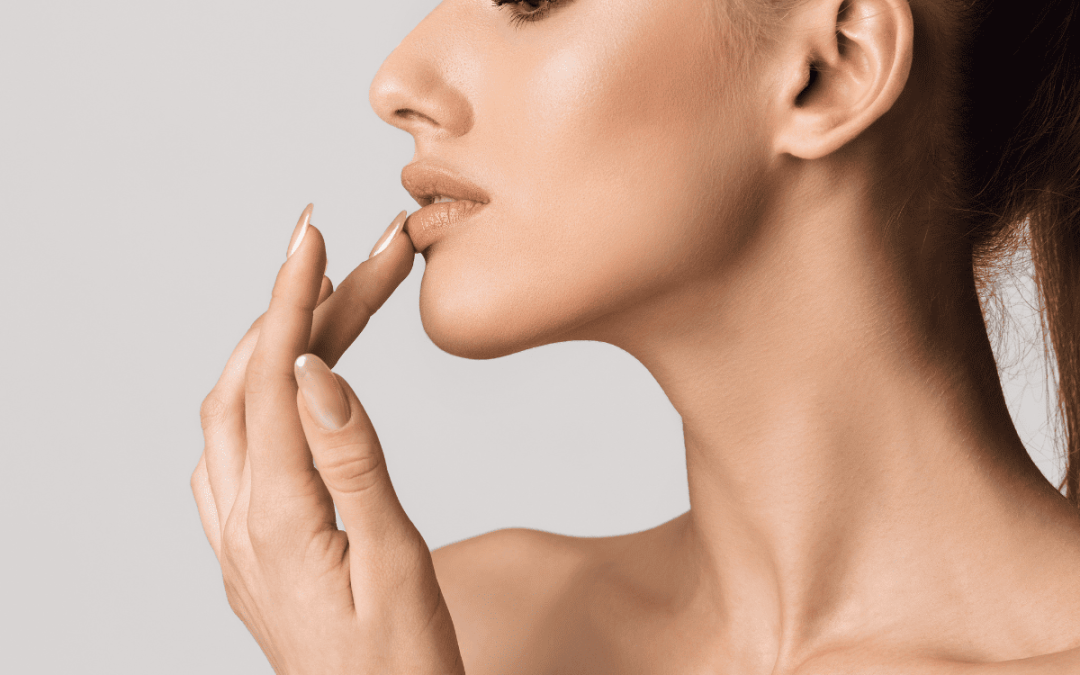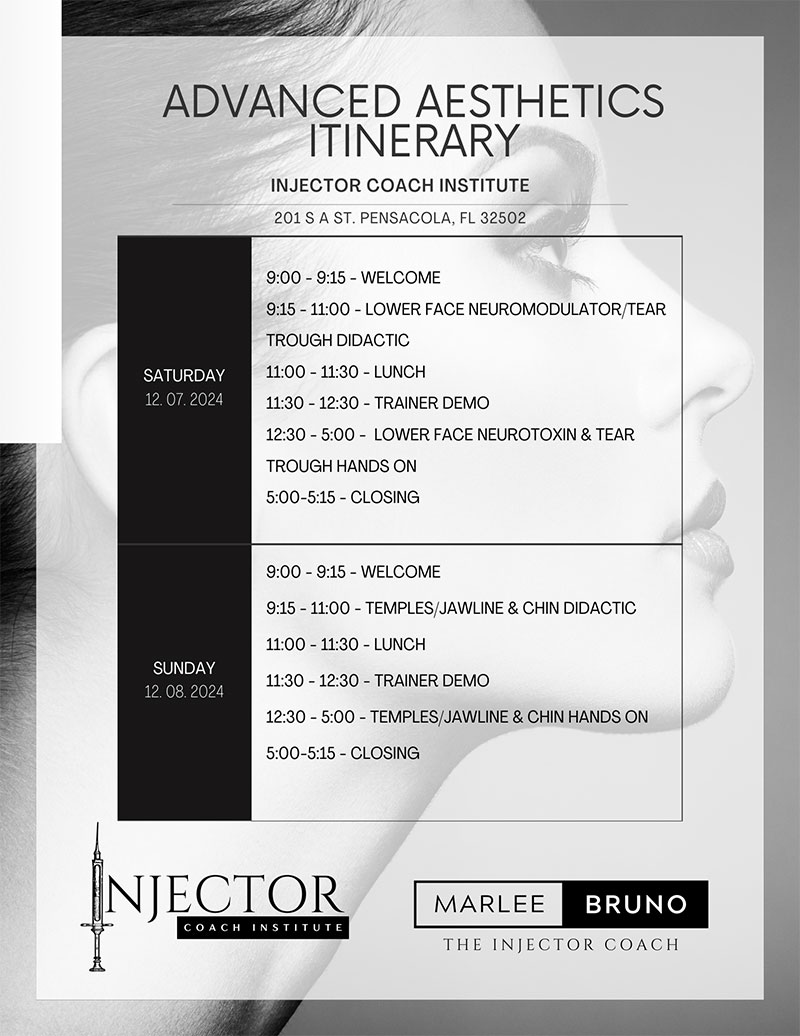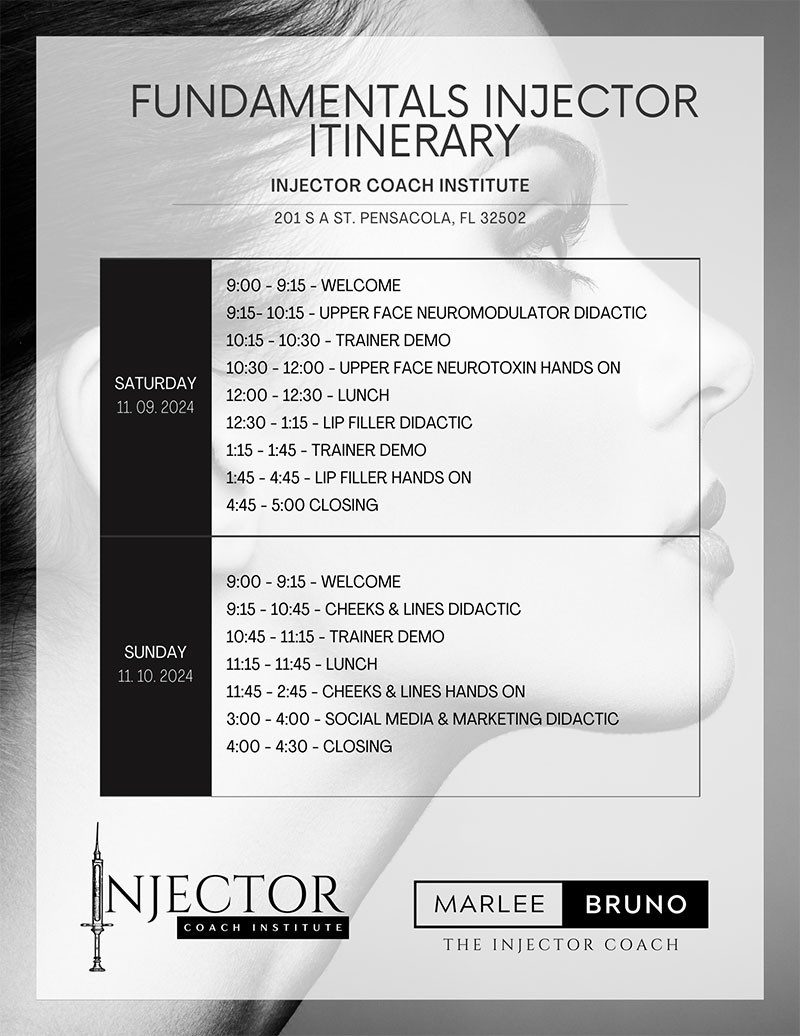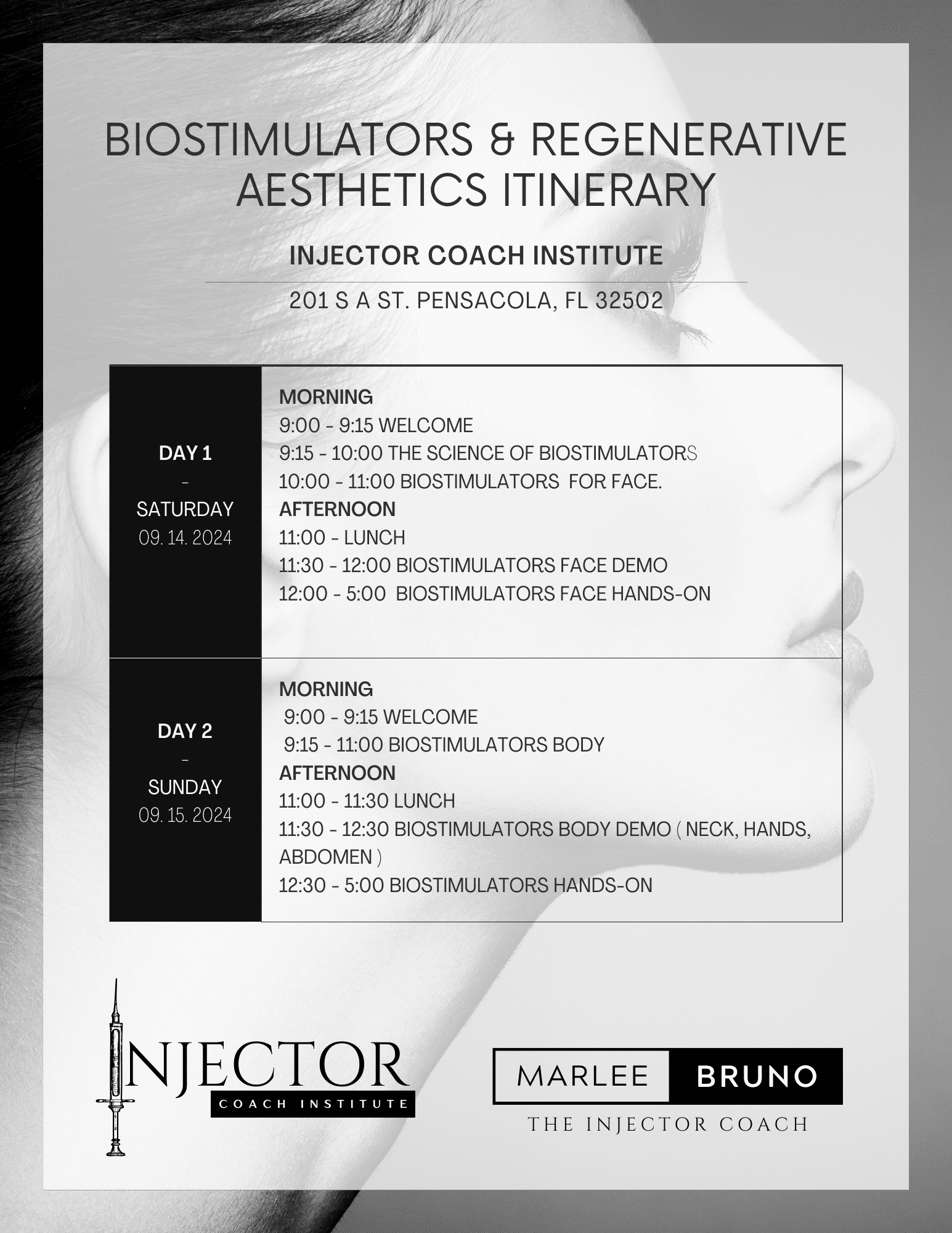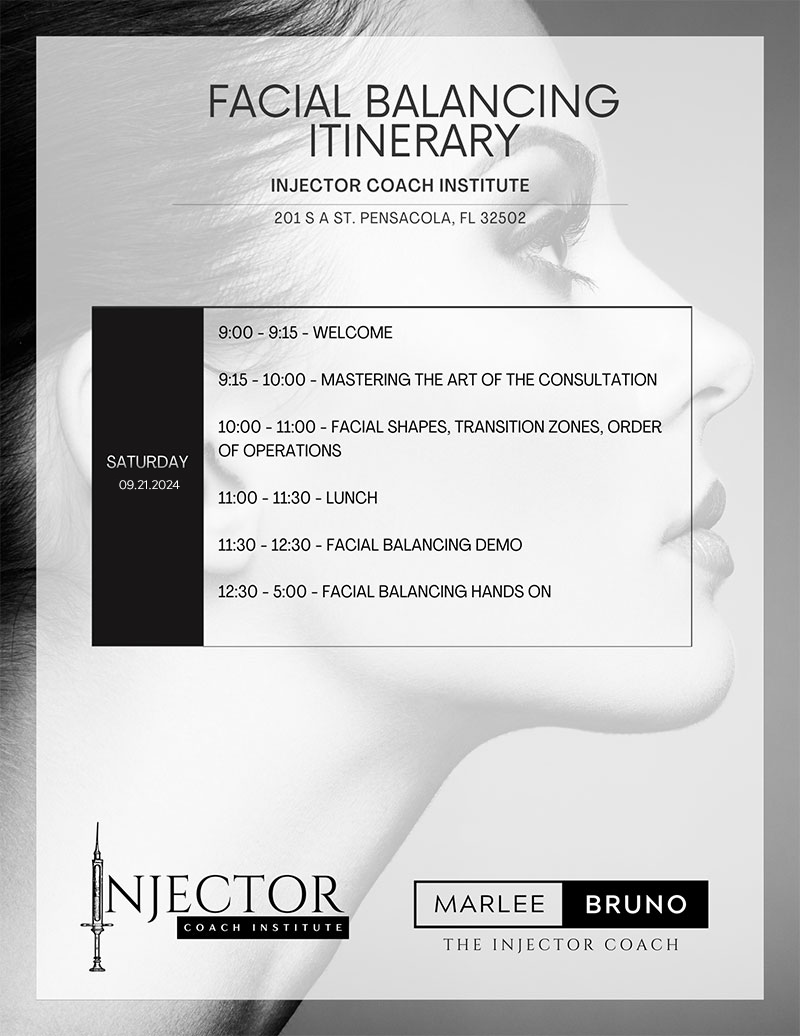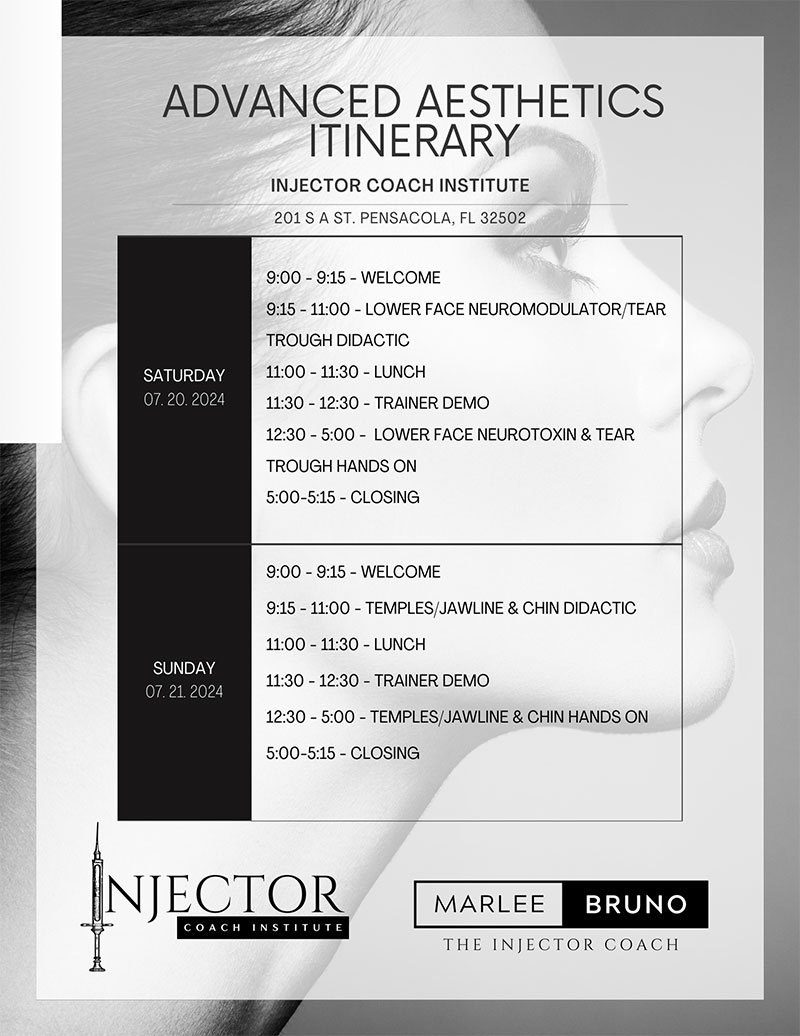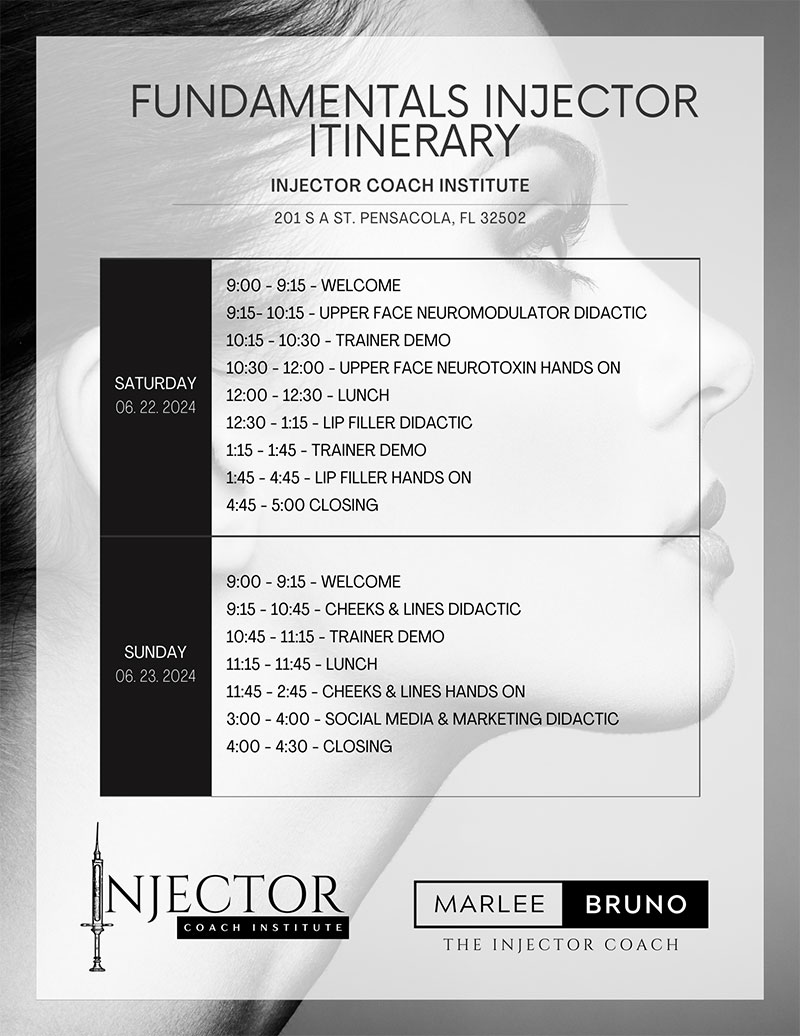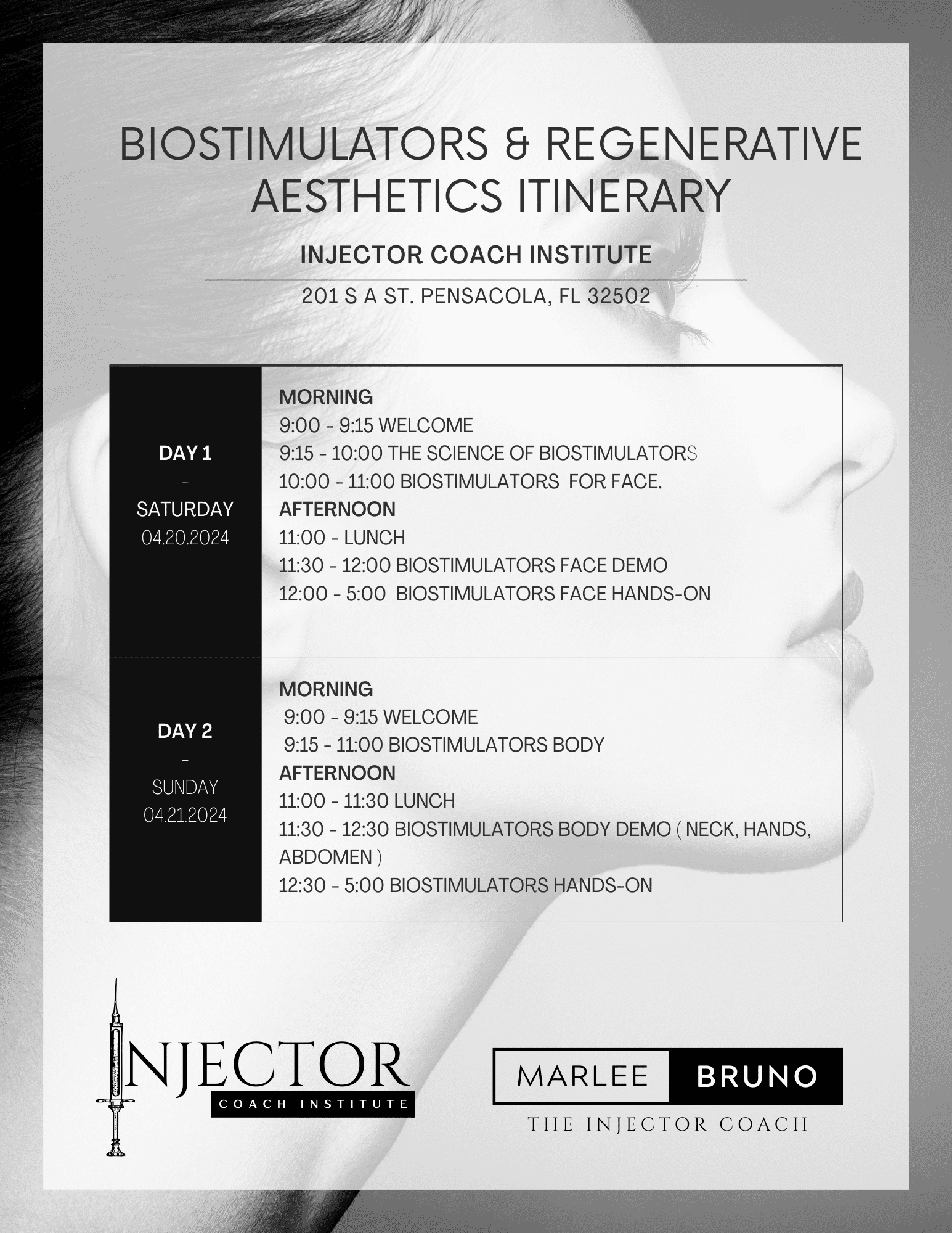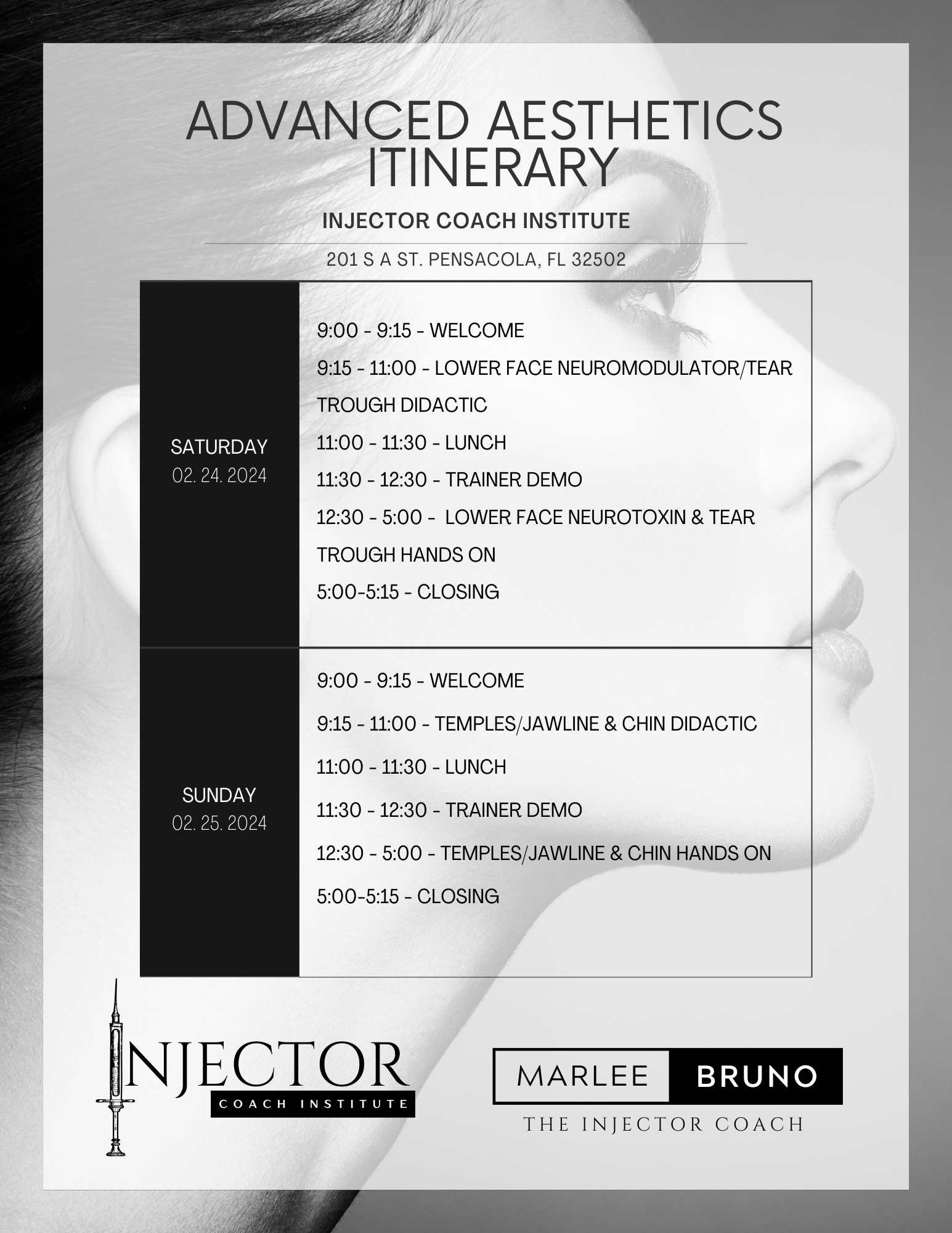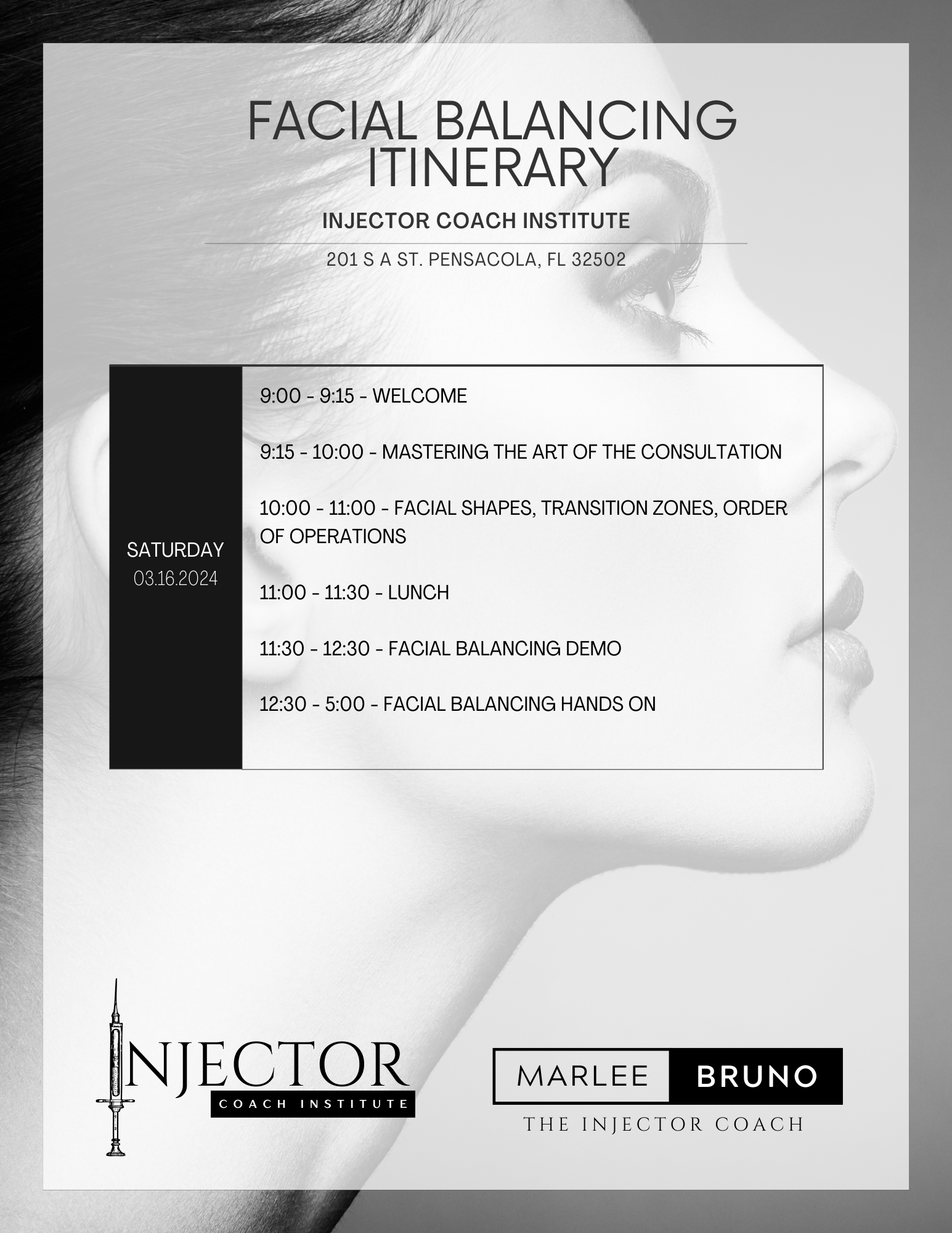| Dermal fillers are a powerful tool in facial aesthetics, used to restore volume, smooth wrinkles, and enhance facial features. For beginners looking to become skilled injectors, understanding the different types of fillers, facial anatomy, and injection techniques is crucial. With the right knowledge and training, you can safely and effectively transform your patients’ appearance. At Injector Coach Institute, we offer comprehensive aesthetic courses that provide the hands-on experience and expertise you need to excel in the world of injectables. |
If you’re thinking about becoming an injector, you’re entering a field that combines art, science, and precision to enhance people’s natural beauty. Dermal fillers are one of the most popular treatments in facial aesthetics, providing patients with subtle, natural-looking results that restore volume, smooth wrinkles, and create a more youthful appearance.
But before you start injecting, there’s a lot to learn. The world of dermal fillers and facial aesthetics can be overwhelming for beginners, and understanding the fundamentals is crucial for success. Whether you’re looking to get started with injectables or simply want to understand the basics of dermal fillers, this guide is designed to provide you with the essential knowledge you need to feel confident in your journey toward becoming an expert injector.
Let’s dive into the world of dermal fillers and facial aesthetics!
What Are Dermal Fillers?
Dermal fillers are injectable substances used to restore lost volume, smooth wrinkles, and enhance facial contours. They’re made of various materials, such as hyaluronic acid, calcium hydroxylapatite, and poly-L-lactic acid. Dermal fillers are used to treat different areas of the face, including the cheeks, lips, jawline, tear troughs, temples, and nasolabial folds.
Unlike neuromodulators like Botox, which relax facial muscles to reduce wrinkles, dermal fillers work by adding volume to the skin. This can help restore a more youthful look, correct asymmetry, and even out wrinkles and folds. Since the results are non-permanent, patients can enjoy beautiful, natural-looking enhancements without the commitment of surgery.
The Different Types of Dermal Fillers
As a beginner, understanding the various types of dermal fillers and their uses will set you on the path to providing tailored treatments for your patients. The most common types of dermal fillers include:
- Hyaluronic Acid Fillers
Hyaluronic acid (HA) is a naturally occurring substance in the skin that helps retain moisture and maintain volume. Fillers made with HA are some of the most popular and versatile on the market. They can be used to add volume to the cheeks, lips, and under-eye area, as well as smooth fine lines and wrinkles.
Popular brands like Juvederm and Restylane offer a range of HA-based fillers that vary in consistency, allowing for customized treatments based on the area being injected.
- Calcium Hydroxylapatite Fillers
Calcium hydroxylapatite is a mineral-like compound naturally found in bones. This filler is thicker than HA and is ideal for deeper lines and areas that need more significant volume restoration, such as the jawline and cheeks. Radiesse is a well-known brand that uses this material.
In addition to providing immediate volume, calcium hydroxylapatite also stimulates collagen production, leading to longer-lasting results.
- Poly-L-Lactic Acid Fillers
Poly-L-lactic acid is a biodegradable synthetic substance that stimulates collagen production. This filler works gradually over time to improve skin texture and restore volume in areas such as the cheeks, temples, and jawline. Sculptra is a popular poly-L-lactic acid filler that is used to treat deeper facial wrinkles and folds.
Unlike other fillers, the results from poly-L-lactic acid fillers develop over several weeks as collagen production is stimulated.
- PMMA Fillers
Polymethylmethacrylate (PMMA) is a synthetic substance used in certain dermal fillers. These fillers are long-lasting, with PMMA providing both immediate volume and long-term structural support. Bellafill is one of the most common PMMA-based fillers, typically used for deeper lines and wrinkles.
While PMMA offers lasting results, it’s typically not as versatile as HA or calcium hydroxylapatite fillers.
How Dermal Fillers Work
Understanding the basic mechanics of how dermal fillers work is important for any beginner injector. When injected, dermal fillers restore volume to areas where the skin has lost elasticity or fullness, such as the cheeks or lips. The filler material is placed beneath the skin’s surface and helps to smooth wrinkles, plump up hollow areas, and improve the contours of the face. Some fillers also stimulate collagen production, which helps improve skin texture and elasticity over time.
The placement, technique, and depth of the injection are crucial for achieving natural-looking results. The goal of an injector is to restore balance and harmony to the face, not overfill or create unnatural bulges. Understanding facial anatomy, the properties of different fillers, and the various techniques for injecting fillers is key to achieving optimal results.
Essential Facial Anatomy for Injectors
As a beginner injector, one of the most important things to learn is facial anatomy. Knowing where and how to inject dermal fillers safely is critical to ensuring good results and avoiding complications. The face is composed of various muscles, fat pads, and blood vessels, so understanding how these structures interact is essential.
Here are a few key areas to be familiar with:
- The Nasolabial Folds (Smile Lines)
These lines run from the sides of the nose to the corners of the mouth. They are one of the most common areas treated with dermal fillers, as they can become deeper and more pronounced with age. Fillers in this area can help restore a youthful appearance by smoothing out the lines and reducing the appearance of sagging. - The Cheeks
Volume loss in the cheeks can create a hollowed or sunken appearance. Adding filler to the cheek area can restore volume and create a more youthful contour. This is often done using HA-based fillers, which are ideal for subtle volume restoration. - The Tear Troughs (Under-Eye Area)
The tear trough area is prone to hollowness and dark circles, especially as we age. Dermal fillers are often used to restore volume to the under-eye area and reduce the appearance of bags and shadows. This delicate area requires precision and knowledge of the surrounding structures to avoid complications. - The Jawline and Chin
Dermal fillers can be used to contour and define the jawline and chin. Whether used to add volume to a weak chin or sculpt a more defined jawline, dermal fillers are an excellent tool for creating symmetry and balance in the lower face.
Safety and Ethical Considerations
As an injector, patient safety and ethical practice should always be your top priorities. Always conduct a thorough consultation before performing any procedure. This includes assessing the patient’s medical history, understanding their goals, and explaining the treatment options available. Always ensure that you are practicing within the scope of your training and licensure.
Becoming a Skilled Injector
The journey to becoming an expert injector takes time, practice, and ongoing education. As a beginner, you’ll need to commit to learning the ins and outs of dermal fillers, understanding facial anatomy, and practicing your injection techniques. Enrolling in a reputable injector training program is a great way to gain the knowledge and hands-on experience you need to start your career on the right foot.
Take the First Step Toward Becoming an Expert Injector at Injector Coach Institute
Are you ready to learn more about dermal fillers and begin your journey toward becoming a skilled injector? At Injector Coach Institute, we offer comprehensive courses designed to help beginners like you develop the skills and knowledge you need to succeed in the field of facial aesthetics. With expert guidance, hands-on training, and a supportive learning environment, you’ll be on your way to mastering dermal fillers in no time.
Enroll in our beginner-friendly courses today and start your journey toward becoming a confident and skilled injector!
FAQ
What are dermal fillers used for?
Dermal fillers are used to restore lost volume, smooth wrinkles, and enhance facial contours. They’re commonly used in areas like the cheeks, lips, tear troughs, and jawline.
Do I need prior experience to become an injector?
No, beginners can start with foundational training. However, hands-on training and an understanding of facial anatomy are essential to providing safe and effective treatments.
How long do dermal fillers last?
The longevity of dermal fillers depends on the type used and the area treated, but typically, results last between 6 months to 2 years.
Are dermal fillers safe?
When performed by a trained professional, dermal fillers are generally safe. Proper technique, patient assessment, and knowledge of anatomy are crucial for minimizing risks.
How do I get started as an injector?
Enroll in a reputable injector training course to gain hands-on experience and the knowledge needed to become a skilled injector.

